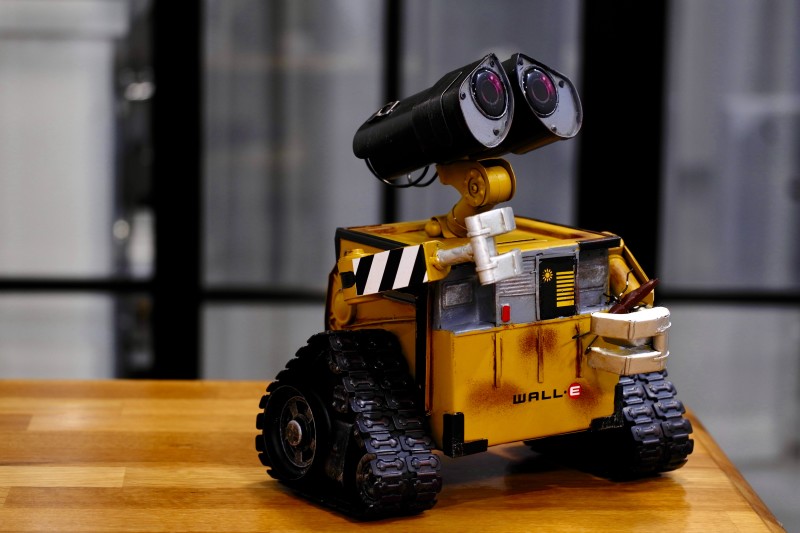
Developing a modern product strategy is critical for any business looking to remain competitive and achieve long-term success in today's rapidly evolving market.
As customers' needs and preferences change, companies must adapt their product offerings and strategies to keep up with the competition. However, developing an effective product strategy in the modern age can be challenging, given the complex and ever-changing market dynamics. In this article, we will explore the challenges you may face when developing a strategy in general, the traditional approaches to strategy, and the emerging approaches and technologies that can help companies stay ahead of the curve. Whether you are a startup or an established business, this blog will provide valuable insights and practical tips for developing a modern product strategy to help you succeed in today's dynamic marketplace.

Challenges of developing a modern product strategy
There are several challenges that you may face when attempting to develop an effective product strategy, including:
Understanding customer needs and preferences: Companies need to deeply understand their target customers and their needs to develop a product strategy that resonates with them.
Staying ahead of the competition: A company's product strategy must take into account the competitive landscape and strive to differentiate itself from competitors.
Balancing short-term and long-term goals: Developing a product strategy requires balancing the company's short-term and long-term goals, such as meeting immediate customer needs and investing in future growth.
Managing resources effectively: Companies must allocate resources effectively to execute their product strategy, including staffing, funding, and technology.
Adapting to changing market conditions: Effective product strategies need to be flexible and adaptable to changing market conditions, technology, and customer needs.
Aligning with company culture and values: A company's product strategy should align with its culture and values, ensuring that all stakeholders are committed to its success.

Traditional approaches to product strategy development
Top-down approach
Traditional top-down approach to product strategy development is a centralized and hierarchical method in which the strategy is developed and executed by senior management and then communicated to the rest of the organization.
In this approach, senior executives make decisions about the direction and scope of the company's product offerings based on their understanding of market trends, customer needs, and the company's goals.
Advantages of the top-down approach include clear decision-making authority, a centralized source of information, and consistency in executing the strategy. However, it can also lead to a lack of buy-in from other departments and teams, as they may not have a voice in the strategy development process.

Market-driven approach
Traditional market-driven approach to product strategy development is a customer-centric method in which the company focuses on understanding and meeting the needs of its target customers and following market trends. In this approach, the company conducts market research and analysis to gather insights on customer preferences and behaviors, and uses these insights to inform its product strategy.
Advantages of the market-driven approach include a focus on customer satisfaction and a better understanding of market trends and customer preferences. However, this approach can also lead to a lack of focus on the company's goals and long-term strategy, as the company may be too focused on immediate customer needs.
Customer-focused approach
Traditional customer-focused approach to product strategy development is a method in which the company prioritizes the needs and wants of its target customers. This approach involves conducting extensive research and analysis to gain a deep understanding of customer needs, preferences, and behaviors, and using these insights to inform the development of products and services.
Advantages of the customer-focused approach include a deep understanding of customer needs, which can lead to high customer satisfaction and loyalty. It can also drive innovation as the company strives to differentiate itself from its competitors and create unique solutions for its customers. However, a purely customer-focused approach can lead to a lack of focus on the company's goals and financial sustainability, as the company may prioritize immediate customer needs over long-term strategy.
The criticism to traditional strategy approaches
Traditional approaches to product strategy development have faced a lot of criticism over the years. Be it the top-down approach, which can lead to a lack of customer focus and a failure to adapt to changing market conditions, or market-driven approach, which can lead to a focus on short-term profits at the expense of long-term sustainability and customer satisfaction, or customer-focused approach has faced criticism for being too narrow in its focus on the needs of individual customers.
Overall, the controversy surrounding traditional approaches to product strategy development highlights the need for a more flexible and adaptive approach that incorporates customer feedback, market trends, and emerging technologies. A few common controversies surrounding the traditional approaches to product strategy development, include:
Top-down approach vs. bottom-up approach: There is a debate over whether product strategy should be developed by senior management (top-down approach) or through collaboration with other departments and teams (bottom-up approach). While the top-down approach provides clear decision-making authority and a centralized source of information, it can limit creativity and innovation, as well as buy-in from other departments. The bottom-up approach, on the other hand, can lead to more creativity and innovation, as well as better buy-in from other departments, but can also result in a lack of consistent direction and decision-making authority.

Customer-focused approach vs. market-driven approach: There is a debate over whether product strategy should be focused on meeting customer needs (customer-focused approach) or on following market trends (market-driven approach). While the customer-focused approach can lead to high customer satisfaction and loyalty, it can also limit the company's ability to create new market opportunities and set trends. The market-driven approach, on the other hand, can provide insights into market trends, but may result in a lack of differentiation from competitors.
Balancing short-term and long-term goals: There is a challenge in balancing the company's short-term goals, such as meeting immediate customer needs, with its long-term goals, such as investing in future growth. A product strategy that prioritizes short-term goals may limit the company's ability to compete in the long term, while a strategy that prioritizes long-term goals may not meet immediate customer needs.
Aligning with company culture and values: There is a challenge in developing a product strategy that aligns with the company's culture and values, ensuring that all stakeholders are committed to its success. A product strategy that conflicts with a company's culture and values may not receive buy-in from employees and may not be effective in driving success.

Modern emerging approaches to product strategy development
As the business landscape continues to evolve, emerging approaches to product strategy development are gaining popularity. These approaches prioritize customer-centricity, agility, and innovation to help businesses stay ahead of the competition.
There are several emerging approaches to product strategy development that aim to address the challenges and controversies of traditional approaches. Some of these include:
Lean methodology
The lean approach emphasizes rapid prototyping, testing, and iteration, allowing the company to quickly develop and refine its product strategy based on customer feedback. The focus is on continuous improvement and learning, rather than on a fixed plan.
Agile methodology
The agile approach emphasizes collaboration, flexibility, and adaptability, allowing the company to respond quickly to changing market conditions and customer needs. The focus is on delivering value to customers through frequent releases of high-quality products and services.
Design thinking
The design thinking approach emphasizes empathy for the customer, experimentation, and prototyping, allowing the company to develop solutions that meet customer needs in new and innovative ways. The focus is on co-creation with customers and continuous improvement.
Customer-centric innovation
This approach emphasizes collaboration between the company and its customers, allowing the company to co-create products and services that meet customer needs.

The criticism to emerging modern strategy development approaches
While emerging approaches to product strategy development offer exciting possibilities for innovation and customer-centricity, they have also been faced with controversy. Critics argue that these approaches can be too focused on individual customers or may lack a solid foundation in data and analytics. There are several controversies surrounding emerging approaches to product strategy development, including:
Lack of structure: Some critics argue that emerging approaches, such as lean methodology and agile methodology, lack structure and can lead to confusion and inefficiency.
Resistance to change: Some companies may resist adopting emerging approaches, as they may be comfortable with their traditional methods and are resistant to change.
Limited applicability: Some emerging approaches may not be applicable to all industries and products, as they may require a certain level of flexibility and adaptability.
Resource constraints: Some companies may not have the resources to implement emerging approaches, such as design thinking or customer-centric innovation, which require significant investment in time, money, and personnel.
Balancing speed and quality: Emerging approaches, such as agile methodology, often emphasize speed and iteration, which can lead to a lack of focus on quality. Some critics argue that this can result in lower-quality products and services.
Balancing short-term and long-term goals: Some emerging approaches, such as lean methodology, may prioritize short-term goals and rapid iteration.

The Future of product strategy development
The future of product strategy development is marked by ongoing technological advancements and a growing focus on sustainability and social responsibility. Companies that embrace data-driven decision-making, customer experience, collaboration, and emerging technologies are poised to thrive in the ever-evolving market. The future of product strategy development is likely to continue evolving and adapting to new trends and technologies. Some potential trends and developments include:
Greater emphasis on data and analytics: Companies are likely to increasingly rely on data and analytics to inform their product strategy decisions. This may involve using big data and artificial intelligence (AI) to analyze customer behavior, market trends, and product performance.
Increased focus on customer experience: Companies are likely to place a greater emphasis on the overall customer experience, including both product and service components. This may involve using design thinking and customer-centric innovation approaches to co-create products and services with customers.
Greater collaboration and co-creation: Companies are likely to increase their efforts to collaborate with customers, suppliers, and partners to co-create products and services that meet the needs of all stakeholders.
Greater use of digital technologies: Companies are likely to adopt new digital technologies, such as blockchain, the Internet of Things (IoT), and augmented and virtual reality (AR/VR), to create new products and services that meet the needs of customers.
Increased emphasis on sustainability and social responsibility: Companies are likely to place a greater emphasis on sustainability and social responsibility in their product strategy, including developing products and services that are environmentally friendly and that contribute to the well-being of society.

Conclusion
Product strategy is crucial for businesses as it defines the direction and scope of a company's offerings, guides decision-making on resource allocation, and helps to ensure alignment with the company's overall goals and market opportunities.
A well-defined product strategy allows a business to prioritize its efforts, allocate resources effectively, and maximize return on investment. Additionally, it helps a business stay competitive, meet customer needs, and drive revenue growth. Overall, the future of product strategy development will likely involve a continued focus on customer needs and market trends, combined with new technologies and approaches that drive innovation and growth.
Ready to craft a modern product strategy? Use our product strategy template and checklist for a step by step guidance. If you need more insights, checkout our product strategy eBook.

Vishal Chaudhary

Read also



Create effective product strategy

Experience the new way of doing product management




